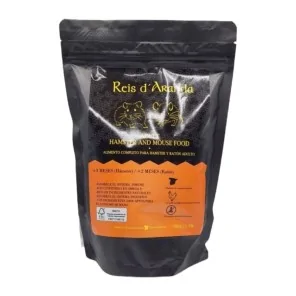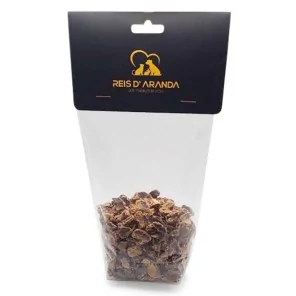Its name says it all: the Vienna blue rabbit comes from Austria. Not only is it beautiful with its shiny blue-grey...
HOW DO I KNOW THAT MY HAMSTER COMES FROM AN ETHICAL BREEDER?
INTRODUCTION
Many times we have heard that the only thing you have to do in this life in order to acquire a pet is to adopt it, all based on the idea that selling is ‘bad’ and that it is based on a supposed ‘exploitation’.
As everywhere, we can find responsible and irresponsible people, as well as responsible breeders, shelters that take advantage of the good faith of others or wonderful people who give animals a second chance.
THE WAY OF SPEAKING
An ethical breeder will always be an informed person who will explain all our doubts in a professional and concise way. A person who only wants to sell will give us just the right information (or not even that), as his main interest is to sell us the animal we are interested in, and he will be insistent.
Also, most ethical hamster breeders belong to a national or international breeders' club or association (mostly English or American clubs), which obliges them to comply with specific welfare standards.
HOW THEY ARE KEPT
The ethical breeder invests a large part of his small earnings or salary in the improvement of the facilities and the acquisition of quality specimens to avoid introducing genetic diseases, undesirable behaviours (aggressiveness) or falling back into a too strong inbreeding.
The first thing we can observe is that the enclosures where the hamsters live have smooth walls (they are not the typical cages with bars), are spacious (minimum 80 cm x 40 cm x 40 cm, being the ideal 100 cm x 50 cm; ideally 100 cm x 50 cm x 50 cm), have a base of absorbent substrate (paper or soya pellets), plenty of chopped kitchen paper so that they can make tunnels or their nest, various little houses to hide in and a wheel suitable for their species (in the case of the Syrian hamster the wheel should be 30 cm in diameter, without bars or a guillotine effect).
Nor does he keep them in pairs or groups, but respects the golden rule of keeping one hamster per habitat (leaving aside mothers with their nursing offspring or sibling groups that can still be kept together before final separation).
This kind of detail is not seen in conventional (traditional) pet shops or in ‘pseudo breeders’ who do not care about the welfare of these animals, only about producing litters quickly and selling them fast and cheap.
Regarding the health of the females, ethical breeders do not make more than two litters in the whole life of the females and these are retired between 12 and 18 months of life (1 year or year and a half), to be given up for adoption with a contract of cession or to be kept as a pet in the breeder's house if he has enough space.
ASKS YOU QUESTIONS AND ADVISES YOU
The ethical breeder always asks questions to the future owner: his experience, if he has everything necessary to be able to give a good life to that hamster, if he has any preference (male or female)?
Many breeders also send a document with the basic notions of welfare that the client must read and sign: feeding, health, how the hamster's enclosure should be, the characteristics of the wheel...
This not only gives peace of mind to the breeder, but also informs the owner correctly before the reservation and also ensures that future mistakes are not due to ignorance or bad advice.
On the other hand, there are occasions when the breeder requires photographs or videos in which the future owner shows that he has everything he needs and that these elements he has (enclosure, wheel, toys...) are correct.
AFTER THE PURCHASE IT DOES NOT DISAPPEAR
Many times we have bought an animal and when we have a problem with it we see that the seller has ‘disappeared’ or the shop cannot help us (basically because they do not usually know what to do or say, as they do not have a training focused on this type of animals); on the other hand, the ethical breeder does not matter if we write to him a week after having the hamster at home or after two years, as when we write to him with any doubt or request for help he will answer us and will try to do what he can.
All ethical breeders like to receive videos and photos of their animals in their new homes or make whatsapp or facebook groups where they get all their pet owners together to share photos of their pets. A great way to keep in touch and observe their evolution.
CONCLUSION
As in all areas of life, the differences between a responsible (ethical) breeder and an irresponsible one when it comes to hamsters are very clear and the ‘red flags’ easy to recognise.
Both buying and adopting as long as they are done responsibly and in the right places are totally respectable options, and one should not take precedence over the other, as the former is not to blame for the latter, nor vice versa. Everything lies in human responsibility, both of the breeder and of the person in charge of the shelter or the new owner.
Leave a comment
Log in to post comments
















